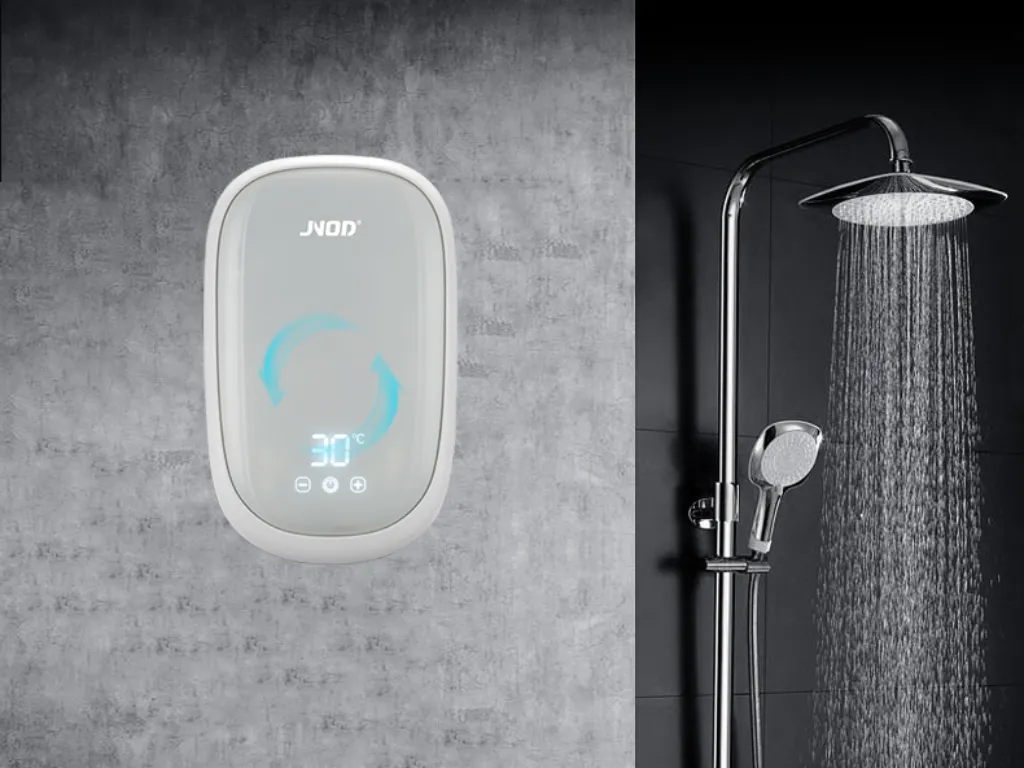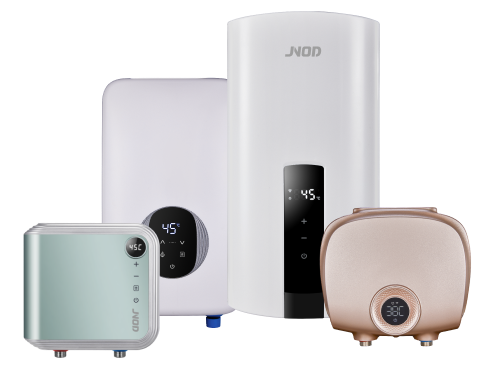Tankless water heaters, on-demand water heaters, are an effective and well-liked choice for many households. Unlike tank units that keep hot water in a storage tank, tankless units heat it only when it is needed. This can result in remarkable energy savings and endless amount of hot water. But how do you decide the right size of tankless water heater for your home? This guide will highlight the main factors to consider so that you select the right tankless water heater size.

Why Tankless Water Heater Size Matters?
Underestimating the peak hot water demands of their households is a mistake that many homeowners make. If you have a small-sized unit, running your shower, dishwasher and washing machine simultaneously can exceed the capacity of an undersized unit leading to abrupt drops in water temperature. On the other hand, oversizing may seem like a good idea but it can be wasteful and needlessly increase your utility costs.
The perfect tankless water heater size is one that fits just right. It should easily cope with the maximum flow rate demanded by your household as far as hot water is concerned. This ensures you never run out of hot water when you need it most and also prolongs the life span of your heater. If your system is always at its limit, then it won’t take long before there’s an issue with its performance. Additionally, an oversized machine will go on and off more frequently than necessary.
How to Determine Tankless Water Heater Size?
Factors such as the number of fixtures, household size and local groundwater temperatures should all be taken into account when selecting the best tankless water heater that suits your needs; this ensures consistent hot water while saving energy and money at the same time.
Calculating Peak Hot Water Demand
The highest amount of hot water used at once in your house is referred to as peak demand. A situation where all water fixtures such as showers, faucets and appliances are on at the same time is known as peak hot water demand. For most households, this takes place in the morning or evening when there may be concurrent showers, dishwashers and washing machines. To ascertain this therefore you must observe your use of water and determine the total flow rate when several fixtures are being used simultaneously.
Calculating the flow rate for your fixtures is simple. For faucets and shower heads, a flow meter can be used or just time how long it would take to fill a one-gallon container up fully. If for example it took you 24 seconds to fill 1 gallon container, then the flow rate will be 2.5 GPM (60 seconds / 24 seconds = 2.5 GPM).
Here is a chart of typical Flow Rates (GPM).
| Fixture | Flow Rate (GPM) |
| Standard Showerhead | 2.5 |
| Low-Flow Showerhead | 1.5 |
| Kitchen Faucet | 1.5 – 2.2 |
| Bathroom Faucet | 0.5 – 1.5 |
| Dishwasher | 1.5 – 2 |
| Washing Machine | 2 – 2.5 |
Let’s say your household peak usage occurs in the morning when two showers, a kitchen faucet, and a washing machine are used simultaneously. Using the flow rates from the table:
Shower 1: 2.5 GPM
Shower 2: 2.5 GPM
Kitchen Faucet: 2 GPM
Washing Machine: 2.5 GPM
Your peak hot water demand would be:
2.5 + 2.5 + 2 + 2.5 = 9.5 GPM
Once you have calculated your peak hot water demand, you can use this information to choose a tankless water heater that can handle this flow rate. This ensures that your heater will provide enough hot water during peak usage times without running out or wasting energy.
Determining Temperature Rise
Temperature rise is the variance between the cold water coming in and the hot water you want. To establish the temperature of incoming water, employ a thermometer to gauge how cold it gets from your tap that’s closest to where this heater is placed. This is chiefly important during the coldest days of the year because groundwater temperatures can vary significantly depending on the season and geographic location. During winter in colder locations, groundwater temperatures plummet while in warmer regions, they remain fairly constant throughout the year.
After determining the incoming water temperature, adjusting your water heater temperature accordingly is crucial for optimal performance. You need to know the standard hot water temperatures required for different uses:
| Use | Standard Hot Water Temperature (°F) |
| Shower | 105 – 110 |
| Kitchen Faucet | 110 – 120 |
| Dishwasher | 140 |
| Washing Machine | 120 – 140 |
For instance, if you live in Florida, the groundwater temperature might be around 70°F, whereas in colder climates, it could be as low as 40°F. If your desired hot water temperature is 120°F, you need to account for this in the temperature rise calculation. For a Florida home, the required water temperature rise would be 50°F, while for a colder climate, it could be 80°F or more.
What Size Tankless Water Heater Do I Need?
The size of the tankless water heater you need largely depends on the number of people in your house and water usage habits.
What Size Tankless Water Heater for a Family of 1-2?
For a family of 1-2 people, the hot water demand is relatively low. Typically, such a household might use a shower and a faucet simultaneously.
- Shower: 2.5 GPM
- Faucet: 1.5 GPM
The total peak demand would be around 4 GPM. Therefore, a tankless water heater with a capacity of 3-4 GPM should be sufficient to meet their needs.
What Size Tankless Water Heater for a Family of 3-4?
A family of 3-4 people usually has higher hot water demands, especially during peak times when multiple showers and other fixtures might be used simultaneously.
- Two showers: 2.5 GPM each
- Faucet: 1.5 GPM
The total peak demand could reach up to 6.5 GPM. Therefore, a tankless water heater with a capacity of 6-7 GPM is recommended for such households to ensure a continuous supply of hot water.
What Size Tankless Water Heater for a Family of 5 or More?
Larger households of 5 or more people have significant hot water needs, often requiring multiple fixtures to be used at the same time.
- Two showers: 2.5 GPM each
- Faucet: 1.5 GPM
- Dishwasher: 2 GPM
- Washing Machine: 2.5 GPM
In this case, the total peak demand can reach up to 10.5 GPM. Therefore, a tankless heater with a capacity of 9-11 GPM would be necessary to ensure there is enough hot water for everyone.
Single Unit vs. Whole House Systems
When selecting a tankless water heater, you have the option of choosing a single unit or a whole-house system. Each has its advantages and is suited to different situations. Here’s a comparison to help you determine which is best for your home.
| Feature | Single Unit System | Whole House System |
| Installation Cost | Lower initial cost | Higher initial cost |
| Hot Water Supply | Limited to one fixture or area | Provides hot water to multiple fixtures simultaneously |
| Efficiency | High efficiency for single point of use | High efficiency for entire home |
| Space Requirement | Requires less space, can be installed under sinks or near fixtures | Requires more space, typically installed in utility rooms |
Single unit systems are ideal for small apartments, single bathrooms, guest houses, or specific areas like an outdoor kitchen. Typically, one tankless water heater per fixture or area is sufficient, such as a unit with a flow rate of 2-3 GPM for a shower or sink.
Whole house systems are better suited for larger homes with multiple bathrooms and higher hot water demands. One whole house tankless water heater with a flow rate of 8-11 GPM can usually cover the entire house. However, very large homes might require two units installed in parallel to handle peak usage times.
Conclusion
Selecting the perfect tankless water heater size for your home involves understanding your home’s size, hot water usage patterns, necessary temperature rise and budget. By following these steps, you can ensure that you choose a tankless water heater that provides sufficient hot water while maximizing energy efficiency. To keep your tankless water heater running efficiently, regular descaling and maintenance are essential. Click here to learn how to descale a tankless water heater.
JNOD: Leading Tankless Water Heater Manufacturer
Since 2009, JNOD has been at the forefront of electric water heating solutions, offering a range of tankless water heaters that ensure a continuous and consistent supply of hot water. With over a decade of expertise, JNOD’s products are designed for efficiency and reliability, providing precise temperature control to eliminate sudden temperature changes. Their energy-efficient units only heat water when needed, reducing utility bills and saving space with their compact design. Trust JNOD to deliver top-quality, durable water heating systems tailored to your needs. Contact us today to explore our products and find the perfect tankless water heater for your home.
